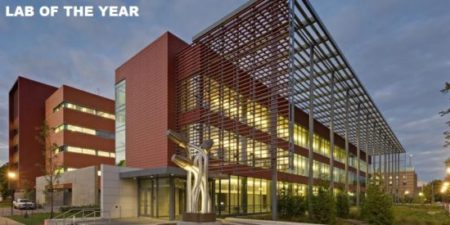
Rail, Light Rail, and Subways
Operation of light rail or subway systems produce transient magnetic fields that perturb the static background magnetic field (which is primarily the geomagnetic field). There are two components to the magnetic field impact from the light rail system:
- Magnetic fields are produced by the flow of electric currents in the cables and rails of the DC traction system, i.e., the currents that power the light rail vehicles. Currents flow from traction power supply substations (TPSS) to the trains (returning on the rails).
- Background magnetic fields are focused by the ferromagnetic (steel) mass of the light rail vehicles, causing localized magnetic field shifts as trains pass.
 Both of these components combine to produce changes in the ambient magnetic field environment with characteristic time-scales typically ranging from a fraction of a second to tens of seconds. The magnitudes of these magnetic field changes are generally strongest near the alignment and decrease moving away from the tracks. Such magnetic field changes can interfere with the operation of sensitive instruments and measurement systems used in research in the physical, biological and health sciences.
Both of these components combine to produce changes in the ambient magnetic field environment with characteristic time-scales typically ranging from a fraction of a second to tens of seconds. The magnitudes of these magnetic field changes are generally strongest near the alignment and decrease moving away from the tracks. Such magnetic field changes can interfere with the operation of sensitive instruments and measurement systems used in research in the physical, biological and health sciences.
Two classes of research instrumentation are most susceptible to electromagnetic interference (EMI) associated with changes in the static magnetic field that can be part of light rail/subway systems. These are:
 Systems that rely on magnetic resonance, and/or precise magnetic field gradients for their operations, such as mass spectrometers and magnetic resonance imaging (MRI) and nuclear magnetic resonance (NMR) systems.
Systems that rely on magnetic resonance, and/or precise magnetic field gradients for their operations, such as mass spectrometers and magnetic resonance imaging (MRI) and nuclear magnetic resonance (NMR) systems.
- Systems that rely on a focused beams of charged particles, such as free electrons, or elemental ions to provide imaging, etching, coating, or other research capability.
- Systems that rely on generation, detection and manipulation of very low-level magnetic or electric fields.

 The second group includes various types of electron microscopes, such as scanning electron microscopes (SEM) and transmission electron microscopes (TEM), and semiconductor or nanotechnology equipment such as focused ion-beam (FIB) and e-beam lithography (EBL) systems.
The second group includes various types of electron microscopes, such as scanning electron microscopes (SEM) and transmission electron microscopes (TEM), and semiconductor or nanotechnology equipment such as focused ion-beam (FIB) and e-beam lithography (EBL) systems.
 The last group includes areas of research utilizing sensitive instrumentations that detect and measure extremely small voltages, currents, forces, or field quantities. One example is magnetoencephalography (MEG) that utilizes highly sensitive magnetic field detectors to map brain activity. Another example could be research that involves quantum state manipulation of materials for use in next-generation of electronic devices.
The last group includes areas of research utilizing sensitive instrumentations that detect and measure extremely small voltages, currents, forces, or field quantities. One example is magnetoencephalography (MEG) that utilizes highly sensitive magnetic field detectors to map brain activity. Another example could be research that involves quantum state manipulation of materials for use in next-generation of electronic devices.
Mitigating these Quasi-DC fields, whether through shielding or a combination of shielding and Active Compensation Systems (ACS) is difficult and arriving at the lowest-cost solution is a complicated process of trade-offs integrating most effective materials, design and technology.
FMS has extensive experience with all aspects of electromagnetic interference from rail systems, whether it is the interference caused to sensitive instruments in a medical or research laboratory, interference caused by the rail system’s signal or communication system or interference with an audio recording studio. In addition to technical expertise and on-the-ground experience, FMS has experience working alongside all of the various interested parties.
Increasingly, the intersection of urban planning/mass transit, high-density research environments, and energy-efficient building designs combined with the emerging next generation of research tools is pushing the limits of standard low-EMI approaches in facilities. FMS represents the next-generation of EMI field management – with innovative approaches and new technologies that can enable new architectural paradigms for research environments.
Recent Projects

FMS as the EMF/EMI Consultant designed and installed the passive and active mitigation systems for this newly established interdisciplinary organization under the Office of Research of the University of California Irvine (UCI) to house state of the art electron-microscope labs (4 imaging cells). The project required analysis of interference potential of all internal and external emission sources, which included vehicle and facility elevators (DC), broadband electrical system (AC) sources, etc.

FMS was engaged as the project’s EMI Consultant by the project architect (Wilson Architects) to conduct an electromagnetic field (EMF) analysis in an existing laboratory (shell space) located in the basement level of the Harvard CNS facility.

Seattle Children’s Research Institute is currently in the construction phase of ”Building Cure”, a 540,000 square foot research building, which will be dedicated to developing therapies for children with diseases such as Cancer, Type 1 Diabetes and Sickle Cell Anemia.

FMS was engaged to conduct a thorough assessment of the building’s design for EMI interference threat concerns to sensitive research equipment. A document review and extensive 3-Dimension computer simulation studies were conducted to evaluate EMF emissions from the building’s electrical distribution, mechanical and other systems.

Over its 20 years, FMS has successfully completed hundreds of EMI projects which included a diverse range of consulting and mitigation services.
Take a look at a list of the markets we serve »

